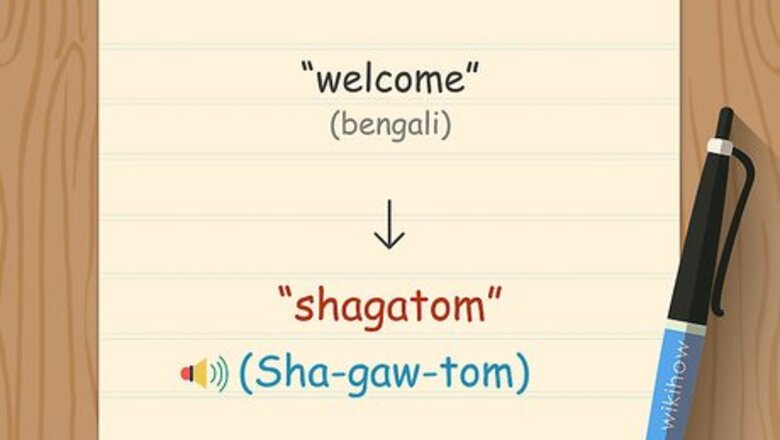
views
Using Asian and Pacific Islander Languages
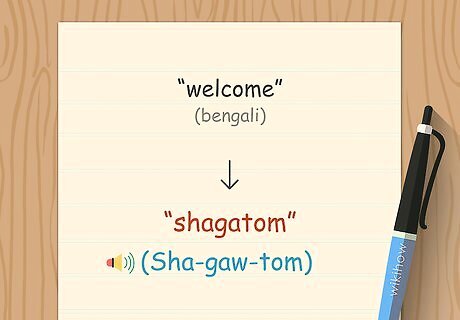
Bengali - Shushagatom/ Shagatom. The first word is for welcoming one person; the second word is for welcoming more than one person. Sha-gaw-tom
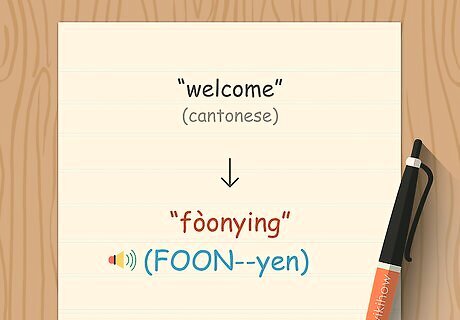
Chinese (Cantonese) - 歡迎 (fòonying). This one is tricky if you've never spoken Chinese. Inflection is everything. Put a little extra stress on the first half of the word. FOON--yen.
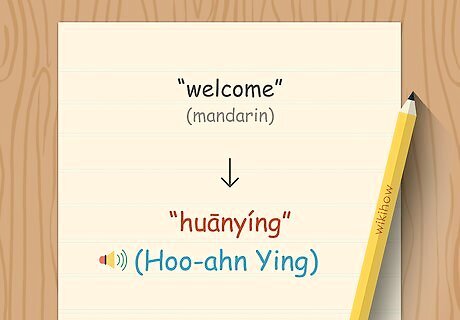
Chinese (Mandarin) - 欢迎 [simplified], 歡迎 [traditional]. Written phonetically like this, "huānyíng," you want to say the second half just a little louder than the first. "Hoo-ahn Ying"

Hawaiian - Aloha. Simple and easy, you've heard this plenty of times. It also means "goodbye." "Ah-loh-ha."

Hindi - स्वागत (Svagat) सवागत हैं (svagat hain). Both of these will work, although the second is a little more formal. "Sva-gaht" "Sva-gaht ha-AIN"

Japanese - ようこそ (yōkoso). Dwell on the first "O" sound longer than the others. This is one where listening to an example or a native speaker will be very helpful. "Yo-O-Ko-So"
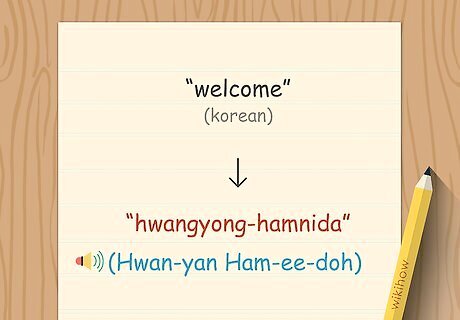
Korean - 환영합니다 (hwangyong-hamnida). Perhaps the toughest one on the list, it is a lot of syllables that come pretty quickly. Take your time learning each part before putting it all together. "Hwan-yan Ham-ee-doh"

Mongolian - Тавтай морилогтун (tavtai morilogtun). Another tricky one, it is pretty guttural, especially at the end of the second word. Try to use a thick, breathy voice. The first word sounds a bit like "tafta." "Tav-ta Mer-lehk-tuhn."

Telugu - సుస్వాగతం (susvaagatam). It almost sounds a bit French with the words sliding effortlessly together. If you speak French, the first half sounds a lot like "Ce Soir." Suh-swa-guh-ta-mon

Tagalog - Tuloy ka (singular), or Tuloy po kayo (plural). The first simply means "enter," and is used for one person or a casual acquaintance. The second is for groups or elderly people. Too-loy kah Too-loy poo kai-yoh
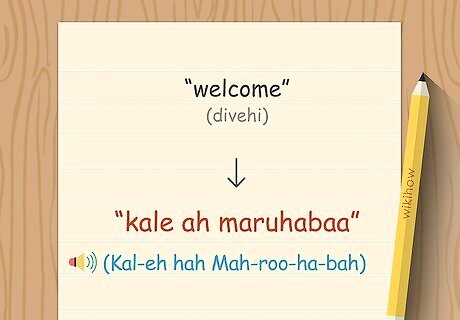
Maldivian (Divehi) - Kale ah maruhabaa. Another tricky one. Kale is just like the vegetable, but with a short "A" sound at the end. The rest sounds just like it looks. "Kal-eh hah Mah-roo-ha-bah"
Using African and Middle Eastern Languages
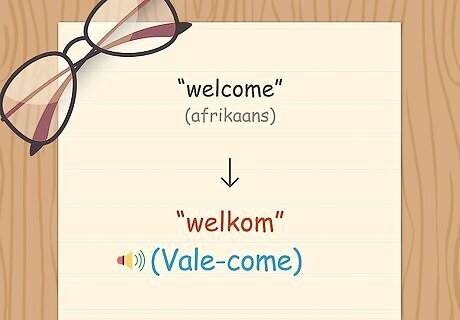
Afrikaans - Welkom. This language is partially based on English, so the pronunciation should be easy. The W sounds slightly like a V, almost a hybrid of W & V. "Vale-come
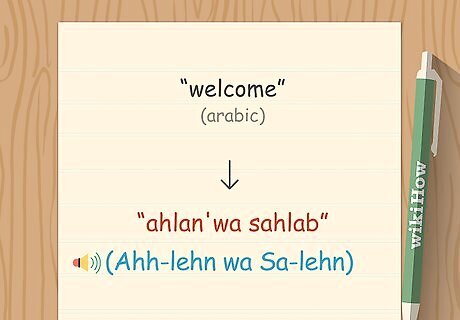
Arabic - أهلا وسهلا (Ahlan'wa sahlab). Tricky for English speakers, you will have an easier time if you think about it as three separate words that you run together. The first and last sections rhyme. "Ahh-lehn wa Sa-lehn"

Hebrew - Shalom. It sounds just like it looks. The second syllable rhymes with the English "foam." "Sha-loam."
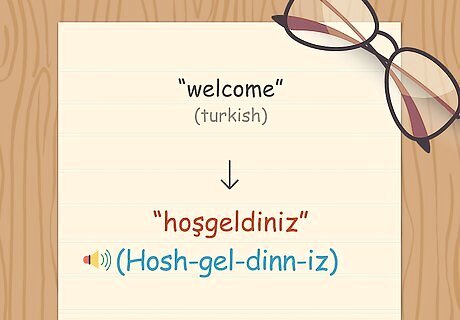
Turkish - Hoşgeldiniz. Again, this is a tricky one if you don't break it down into smaller parts. You can also use the more general phrase, "Buyurun," ("Booh-Rohn"), to say "hello" and "welcome" all at the same time. "Hosh-gel-dinn-iz"
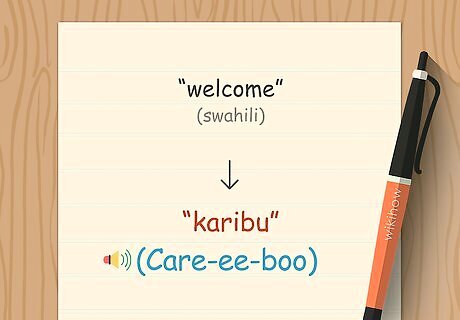
Swahili - Karibu. This is how you welcome one person. For more than one, you would say "karibuni." Care-ee-boo Care-ee-boo-nee
Using European Languages

Czech - Vítej (informal) or Vítejte (formal). There are many welcoming lines in Czech, but these are the two easiest ones to use. The other seven or so options are for specific cases, but these two will work almost anywhere. Vítej -- "Vee-tai" Vítejte -- "Vee-tai-ta"
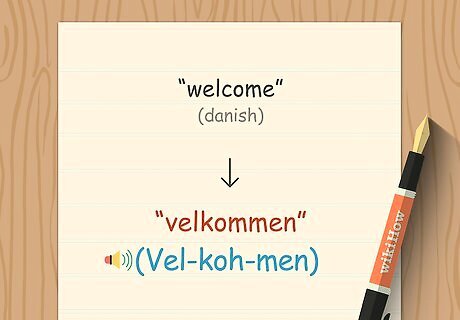
Danish - Velkommen. Simple and easy, it almost sounds like the English "welcome." However, use a V instead of the W, and add the word "men" to the end. "Vel-koh-men."
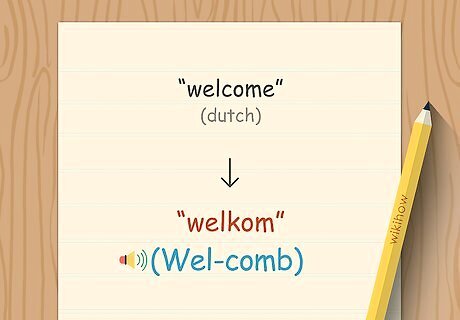
Dutch - Welkom. Almost exactly like the English word but with a little harder final syllable, which sounds a bit like "comb." Wel-comb.

French - Bienvenue. Simple and easy, it literally means "good to see you." When saying the final "U" sound, try to pucker your lips a bit. To learn how, say an "EEEE" sound, then move your lips into a U shape. This "e-ooo" is the French U. "Bee-ehn-ven-oo.
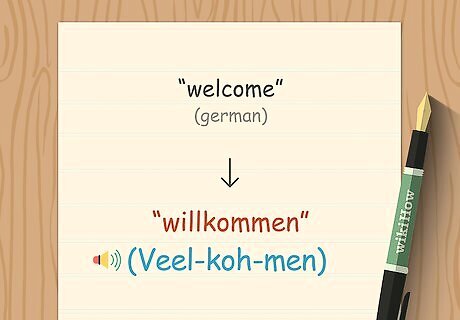
German - Willkommen. Like the Danish (they are related languages), this is also similar to the English word. However, you again want the W to sound more like a V.
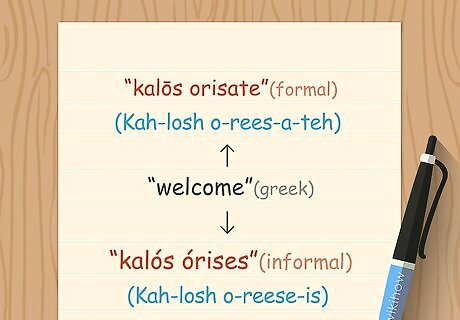
Greek - Καλώς ορίσατε (Kalōs orisate, formal), Καλώς Όρισες (Kalós órises, informal). Another language with several difficult versions, these two will get you started in any circumstance. Note that, while there is an "sh" sound, you want to keep it subtle, almost burying it in the rest of the word. Καλώς Ορίσατε -- "Kah-losh o-rees-a-teh" Καλώς Όρισες -- "Kah-losh o-reese-is"
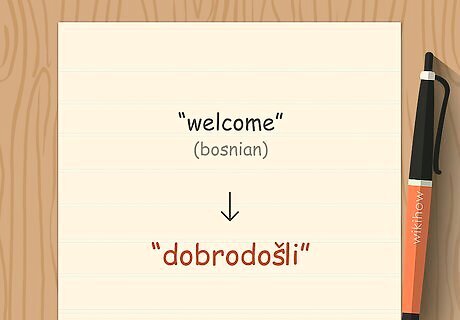
Bosnian - Dobrodošli
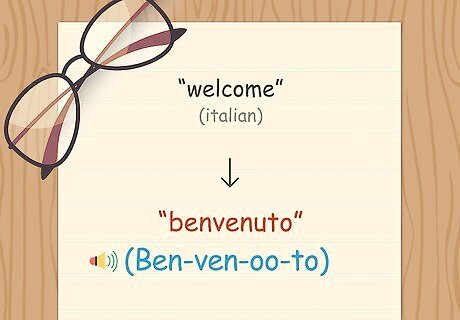
Italian - Benvenuto. Similar to the French but easier to pronounce. If you're speaking to a woman, replace the final O with an A. "Ben-ven-oo-to."

Portuguese - Bem Vindo. Again, replace the O with an A if speaking to a female. Note that these are two separate words. Beem Veen-doh
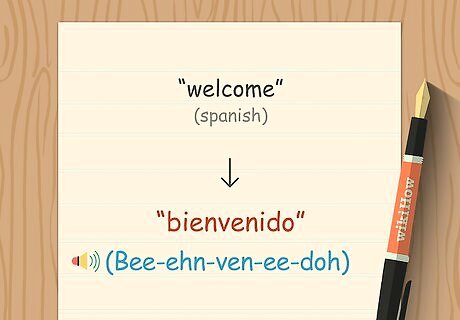
Spanish - Bienvenido. Almost identical to the French and Portugese, as they come from similar linguistic roots (Latin). "Bee-ehn-ven-ee-doh."

Swedish - Välkommen
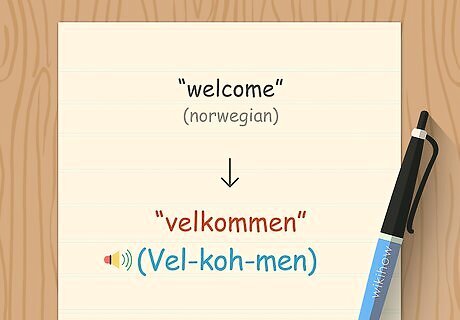
Norwegian - Velkommen. It's similar to Dutch, German, and the others. Replace the W with a V, and add "men" to the English "welcome." "Vel-koh-men."
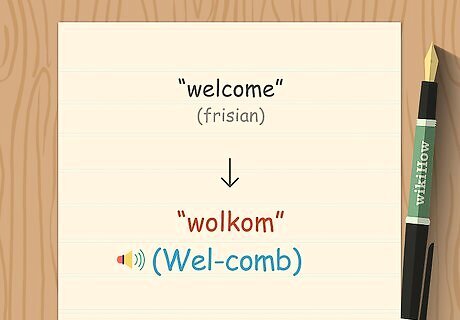
Frisian - Wolkom. This is the closest "living" relative of English. It makes speaking really easy -- so just match it close to "welcome," but use a longer O sound at the end (like in the word "comb.") "Wel-comb"




















Comments
0 comment